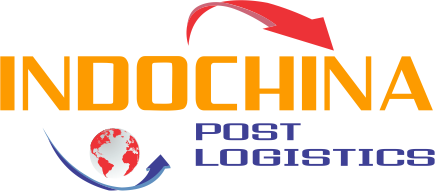There is a high risk that the COVID-19 pandemic outbreak will resurface globally, particularly during the winter. Many European countries are grappling with the next wave of the pandemic, which may be far more severe than the first, raising fears of a further economic shutdown. Despite the fact that the crisis has reduced economic potential, COVID-19 has revealed some focal points in the process of reviving and reshaping global supply chains in Southeast Asia.
Contents
International supply chain diversification
The unprecedented disruption caused by the COVID-19 epidemic highlights the risk of over-reliance on a single nation, China, for supply chain management and operations. One factor working in favor of the ASEAN region is that multinational corporations (MNCs) have sought to diversify their supply chains out of China in recent years, owing to rising trade tensions between the United States and China, as well as rising labor costs in China. ASEAN countries have focal points to immediately benefit from this supply chain redesign by diversifying parts of the supply chain to countries in the region while maintaining higher-value manufacturing in China through the adoption of digital transformation and automation.
Even before the COVID-19 epidemic, Southeast Asia’s e-commerce sector experienced a solid surge, increasing nearly 600 percent in value from US$ 5.5 billion in 2015 to US$ 38 billion in 2019, with a target of US$ 150 billion by 2025, facilitating the rapid development of logistics for e-commerce over the next five years.
It is also advantageous because, as a result of the complicated COVID-19 epidemic, consumers have turned to online retailers to purchase entertainment items and even groceries, creating a significant incentive for e-commerce.
Recovery from the pandemic in logistics
Singapore is one of Southeast Asia’s fastest-growing e-commerce markets. In 2020 alone, the island is expected to generate nearly US$ 10 billion in online sales.
Malaysia’s logistics industry has grown in recent years, and there will be many incentives for it to expand in line with the shifting trend of regional supply chains. With the rise of e-commerce in the country from the beginning of 2020 to the present, Malaysian logistics companies are capitalizing on this new trend to develop new segments. Companies are interested in emerging industries such as cold chain logistics and last-mile transportation. Malaysia’s economy is expected to grow by 5% to 6% this year, boosting the development of the logistics industry. Sepanggar Bay Container Port has received a RM 34.3 million investment from the government to improve its infrastructure. Various incentives announced in the RM35 billion short-term economic recovery plan will help to increase foreign direct investment inflows (FDI). With these timely incentives and competitive real estate and labor prices, Malaysia will be positioned as one of the primary beneficiaries among ASEAN partners in capturing production activities and supply chains in the context of a global supply chain restructuring that is currently underway.
Thailand’s logistics operations are facing deterrents in the movement of goods across borders to Myanmar, following Myanmar’s announcement to tighten cross-border control as part of COVID-19 preventive and control measures beginning September 17, 2020. Thailand, on the other hand, is a manufacturing hub in the region, and the country’s main infrastructure investment continues to attract regional investment in the logistics industry.
Indochina’s shining light
Cambodia is aiming to become the region’s shipping hub. This is part of the country’s goal of becoming an ASEAN regional logistics hub. According to Cambodia’s Minister of Transport and Public Works, Mr. Sun Chanthol, the country is carrying out a number of exercises to modernize transportation infrastructure and services, with the goal of opening new global doors to alleviate and adjust border traffic congestion. The government is actively working to improve the country’s road infrastructure and to gradually open new border crossings. When road infrastructure and freight access reach a more convenient level, they will be the tools that drive national economic growth.
Despite COVID-19’s significant disruption to the global economy, Cambodia’s mission to improve its international image and increase national income has resulted in a steady stream of new infrastructure projects. Despite the spread of COVID-19, the government has not suspended or canceled any new infrastructure projects, according to the Minister of Transport and Public Works. In addition, the Ministry announced the signing of a technical cooperation agreement with the Japan International Cooperation Agency (Jica) for phase II of the “Cambodia Logistics System Improvement Project.”
The Cambodian government’s efforts to improve logistics are still in their early stages. The long-term goal is to make Cambodia one of the most appealing logistics hubs in the ASEAN region, attracting more investors to set up factories and businesses. Cambodia’s freight forwarding activities will more than double by 2025. (quoting predictions published by JICA in April 2018). Cambodia and Singapore have launched the Phnom Penh Logistics Project, which will expand Cambodia’s logistics and supply chain infrastructure as part of the Smart Growth Connectivity initiative, which not only implements modern supply chain solutions but also supports growth in the ASEAN logistics sector.
Despite the influence of COVID-19, Vietnam is expected to become one of Southeast Asia’s fastest-growing economies. Vietnam is also one of the countries that are attempting to contain the spread of the COVID-19 epidemic. Regardless of the logistics opportunities for e-commerce, Vietnam’s new free trade agreements (FTAs) with major trading partners such as the European Union (EVFTA) bring many benefits to the logistics industry and are an important growth lever following the COVID-19 pandemic. Agreements such as EVFTA will boost Vietnam’s production, import, and export activities. The logistics industry will grow in tandem with the development of manufacturing and import-export activities.

